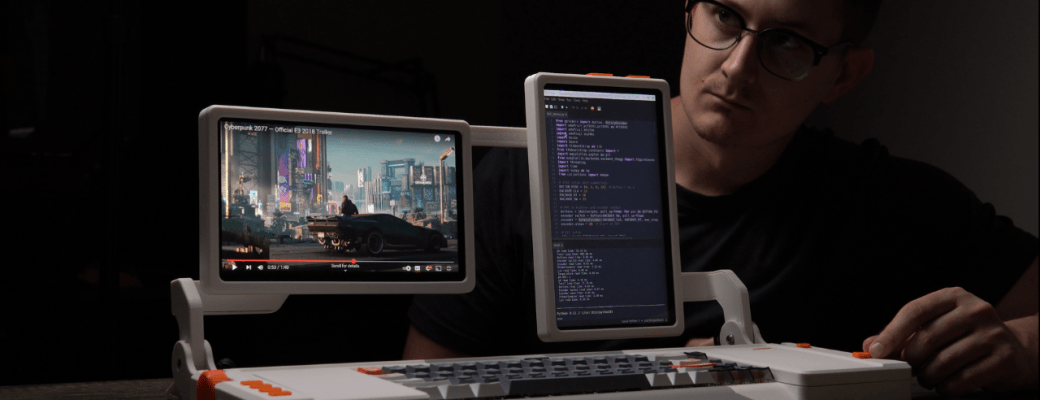In a corner of the maker community on Reddit and YouTube, a user under the alias Sector07 has achieved something that many enthusiasts can only dream of: building a functional, modular dual-screen cyberdeck from scratch, with a design that looks like it came straight out of the Cyberpunk 2077 universe.
His project, called RPI DEV, has captured the attention of technophiles for its combination of retro-futuristic aesthetics, precise engineering, and total openness to free knowledge. Inspired by devices such as the Cyberdor 2064 and the Ogre Project, the author decided to create his own version, with a clear intention of utility and futuristic aesthetics.
It was in his Reddit post where he officially presented it alongside his full video on YouTube.
What is a cyberdeck and why is it relevant?
Cyberdecks are customised devices that combine computers such as Raspberry Pi with screens and physical controls, and whose design is reminiscent of science fiction. Although their appearance is usually the most striking feature, their true strength lies in their versatility and the absolute control they offer the user over the hardware.
The RPI DEV is no exception. It is portable, 100% customisable and capable of performing real electronics and software tasks, thanks to its modular internal design. As a result, these types of devices are used as development stations, mobile laboratories, robot controllers or learning tools for STEM.
“I wanted it to be fully 3D printable, I wanted it to be easy to assemble, have good usability, and I also wanted to include kind of a retro futuristic theme”.
They also have a cultural value: they represent the spirit of ‘do it yourself’ (DIY), where technology is not a consumer product, but a language with which one can create without restrictions.
Home engineering that is as precise as it is ambitious
Behind the impressive appearance of the RPI DEV lies a meticulous development process, the result of a combination of digital design, 3D printing, custom electronics and constant problem solving. The result is a functional device.
From 3D modelling to functional prototype
The entire development process began with rigorous computer-aided design work. Each component of the chassis was modelled and 3D printed with press-fit joints and tolerances adjusted to the millimetre. As a result, this approach made it possible to avoid screws, facilitate maintenance and give other creators the freedom to modify the design as they wished.
“I designed everything with tolerances in mind, but the only way to really know how well it would actually work, was to print out a bunch of test parts”
The goal was clear: robustness without complexity.
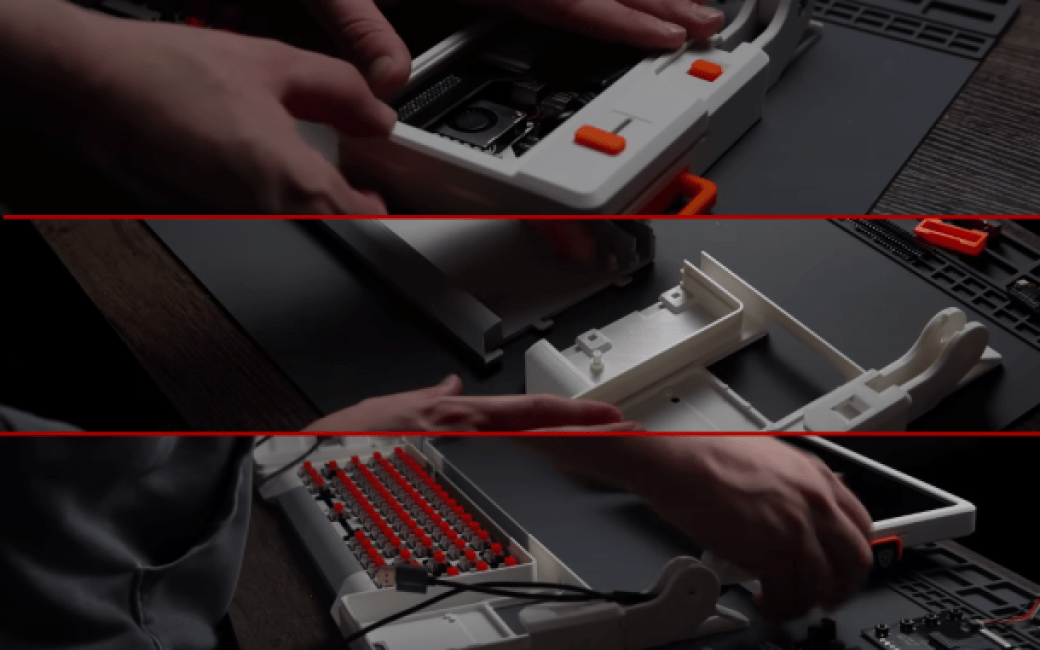
Electronics designed from scratch
To connect the Raspberry Pi to multiple peripherals, Sector07 developed three custom PCBs using KiCad software. These boards manage power distribution, interaction with buttons and sensors, and GPIO bus expansion via a 40-pin FPC (flexible flat cable).
The components were manufactured by PCBWay, a sponsor of the project. After receiving the boards, the author performed high-precision soldering, facing typical errors of craftsmanship. At one point in the process, he describes:
“So when I was soldering this, I guess I wasn’t paying close enough attention, and I got the two [resistors] mixed up.”
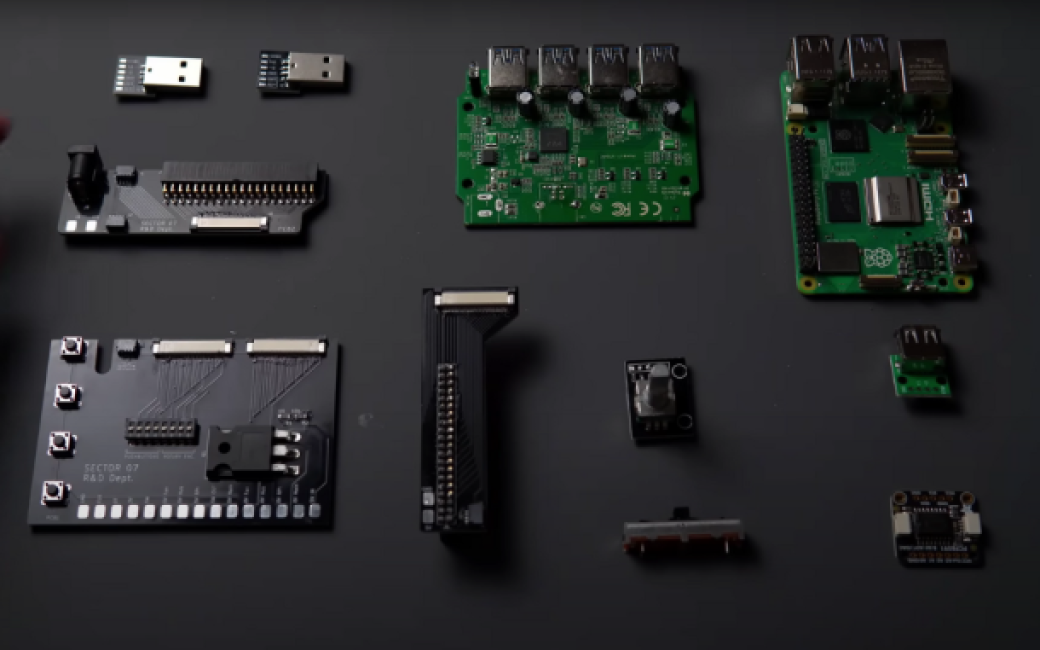
Trial, error, and ultimate success
After several tests and an initial failure to turn on the device…
“After all that work, you expect it to at least do something, and instead, it did absolutely nothing at all”
He managed to identify the error, correct it, and successfully power up the system. With everything assembled, RPI DEV became a functional unit.
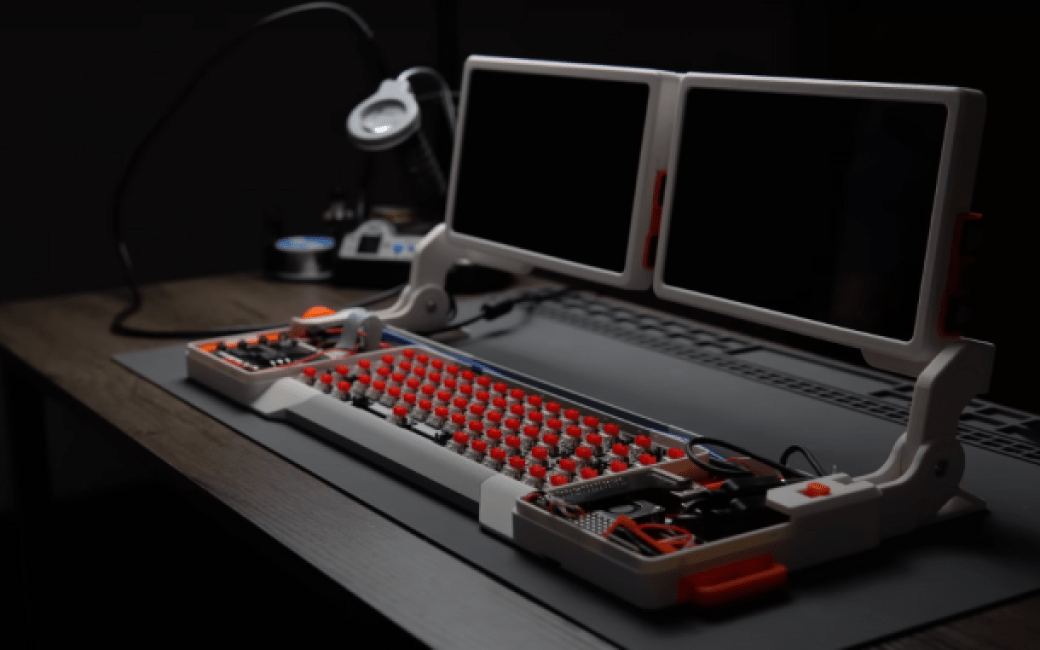
Features that make the RPI DEV a unique tool
This cyberdeck is not just aesthetic. It offers a range of features that make it a serious tool for developers, educators and makers. These include:
- Dual rotating screens: both can switch from landscape to portrait mode. They include mechanical stops to prevent strain on the cables.
- Programmable physical controls:
- Linear slider
- Rotary encoder with push button
- Four configurable buttons
- External GPIO port, ideal for connecting shields (expansion boards), sensors or actuators.
- Auxiliary USB port, useful for Wi-Fi modules or other peripherals.
- Quick eject system for the Raspberry Pi, allowing it to be removed for programming, updating or reuse without dismantling everything.
Practical demonstration: sensors, science and learning
To illustrate the capabilities of the RPI DEV, the author conducted an experiment in which, using sensors connected via the I2C protocol, he demonstrated how this cyberdeck can simultaneously measure light, temperature and pH inside a container.
The test consisted of comparing water with hot coffee. The water reflected a neutral reading on all sensors, but when coffee was added:
- The temperature rose rapidly.
- The brightness decreased due to the opacity of the liquid.
- The pH dropped, revealing the acidity of the coffee.
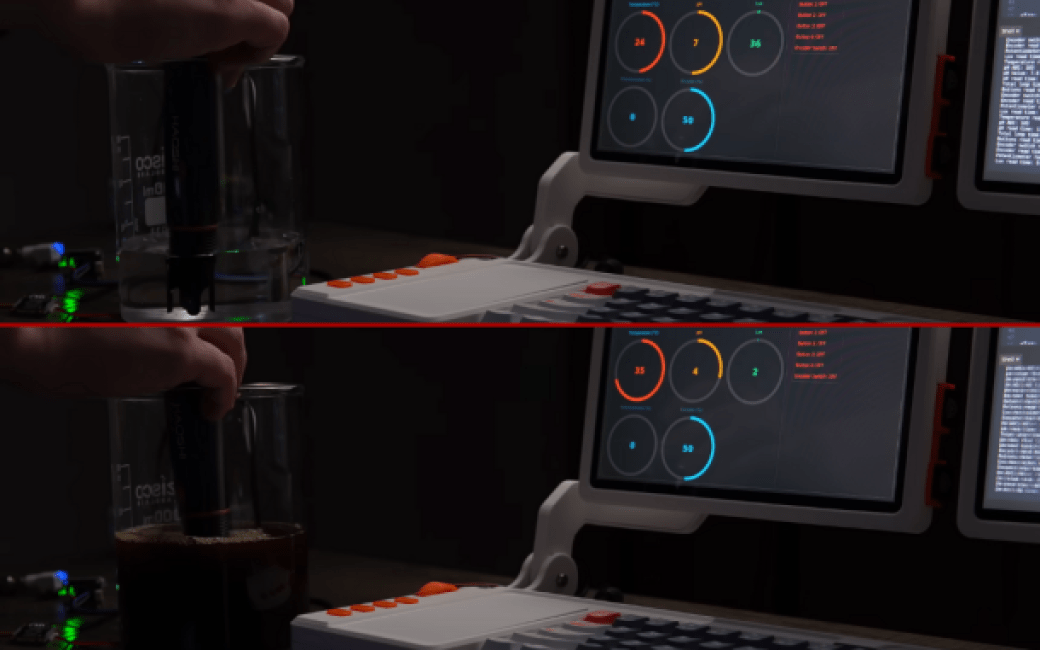
This is a clear example of how this type of platform can be used in educational, scientific or experimental environments.
Open Source: sharing to multiply
Perhaps the most relevant aspect of the entire project is its open philosophy. The author has shared all the files in his official GitHub repository: .step models, KiCad files, GUI (graphical interface) source code, bills of materials (BOM) and general instructions.
‘I’m trying to get better at this so that someday I can build stuff full time and make everything I do open source’, he says in his Reddit post. This decision not only allows others to replicate the project, but also invites them to improve it, expand it and adapt it to new needs.
Beyond the cyberdeck: what’s next for Sector07
RPI DEV is just one piece of the universe this creator is building. In his own words, he is already working on new projects that include:
- A functional biomimetic robot.
- A thermal katana inspired by Cyberpunk 2077, with a real heating element.
- Mechanical ‘mantis blades’ with a pneumatic system and gesture control, capable of generating 100 lbs of force in 0.25 seconds.
“My next YouTube project is going to either be a biomimetic robot I already built, cyberpunk 2077 thermal katana (real, nichrome heated element, not a prop), or maybe finish the mantis blades (also real, full metal with gesture controls and backpack pneumatic system. Roughly 100lbs strike force in 0.25 seconds).”
These plans reflect a genuine interest in DIY innovation with a strong visual and functional component. Robots, functional themed weapons, and gestural technology are part of this creator’s future.
The value of creating and sharing technology
The RPI DEV is more than a gadget: it is a symbol. It represents what can be achieved when knowledge, curiosity, and open source culture come together in the right hands. From its aesthetics to its electronic architecture, each component was designed to be understood, replicated, and transformed by others.
In a world increasingly closed off by patents and closed products, creations like this are a reminder that innovation does not need permission. It only requires time, passion, and the willingness to share.
